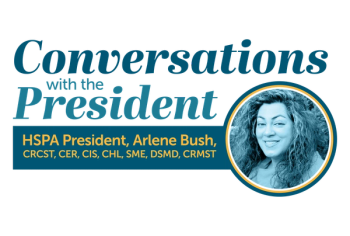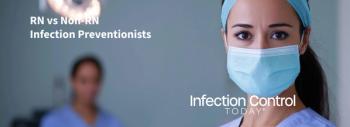
At IDWeek 2025, Detroit SNFs Spotlight A Familiar IPC Paradox: Strong Beliefs, Uneven Practice
At IDWeek 2025, a Detroit consortium reported a familiar IPC paradox in skilled nursing facilities: Staff know the basics, but practice lags. Inconsistent rub times, dwell times, and respirator seal checks point to behavior-focused training—not more slides—as the next move.
Skilled nursing facilities (SNFs) carry a heavy infection-prevention burden, yet many operate with lean resources and constant staff turnover. A multidisciplinary team from Wayne State University, Beaumont Health, Henry Ford, and the Michigan Department of Health and Human Services brought data to that reality in a poster presented at IDWeek 2025 in Atlanta, Georgia, from October 19 to 22, 2025. Using CDC’s Project Firstline framework, the group established a baseline of infection prevention and control (IPC) knowledge, attitudes, and practices (KAP) among health care personnel working in Detroit-area SNFs—information now driving a tailored implementation plan.
How the Assessment Worked
The team administered a 23-item cross-sectional survey across 8 SNFs (January 2023 to May 2024), approved by the Wayne State IRB. Questions covered hand hygiene, PPE selection and use, environmental cleaning, and routine behaviors such as mask donning and N95 seal checks. Responses were anonymous and analyzed descriptively to identify role-specific and system-level gaps that could be addressed through training and workflow redesign.
Among 168 respondents, 82% were female and 74% Black/African American, which is representative of the Detroit long-term-care workforce. Roles spanned nursing (23%), certified nursing assistants (18%), housekeeping/environmental services (EVS) (16%), and administrative staff (12%), allowing the team to compare KAP across job categories.
What They Found
Knowledge was generally solid on fundamentals: 90% correctly identified key elements of handwashing. But proficiency slipped on details that often separate policy from practice:
- Correct recognition of alcohol-based hand sanitizer rub time: 63%.
- Understanding of disinfectant contact (wet) time: 76%.
- Isolation and personal protective equipment (PPE) selection for common scenarios: 71%.
Attitudes toward IPC were strongly positive (87 to 93% endorsed the importance and personal responsibility for IPC), yet self-reported behaviors exposed practical gaps:
- Mask use prior to patient care was inconsistent (only 73% reported always doing so).
- N95 user seal checks were frequently missed (86% reported not performing them consistently).
Notably, KAP scores were similar across job categories, underscoring that opportunities for improvement are broad-based and not limited to any single discipline.
Why it matters for SNFs
For infection preventionists working with SNFs, the results reinforce a familiar pattern: Knowledge and intent are necessary but not sufficient. The gaps identified—sanitizer rub time, disinfectant dwell time, correct PPE for isolation, routine respirator seal checks—are precisely the behaviors most vulnerable to production pressure, supply changes, and unit-to-unit variation.
The authors argue that closing these gaps will require behavior-focused, not just knowledge-focused, strategies: hands-on, role-specific training; visual cues at the point of use (eg, posted dwell times on bottles/carts); standard work embedded into huddles; and peer champions drawn from nursing, CNAs, and EVS to normalize correct practice on every shift. Because KAP scores were consistent across roles, interventions should be whole-facility and multidisciplinary.
From Baseline to Action
Backed by the Michigan Department of Health and Human Services and CDC’s Project Firstline, the team is using these baseline data to tailor modules for Detroit SNFs and to select pragmatic process measures (eg, observed rub times, on-the-spot seal-check coaching, and documented dwell-time adherence). Next steps include a posttraining remeasurement of KAP and tracking facility-level outcomes such as device-associated infections and Clostridioides difficilerates to link practice change with clinical impact.
Newsletter
Stay prepared and protected with Infection Control Today's newsletter, delivering essential updates, best practices, and expert insights for infection preventionists.






